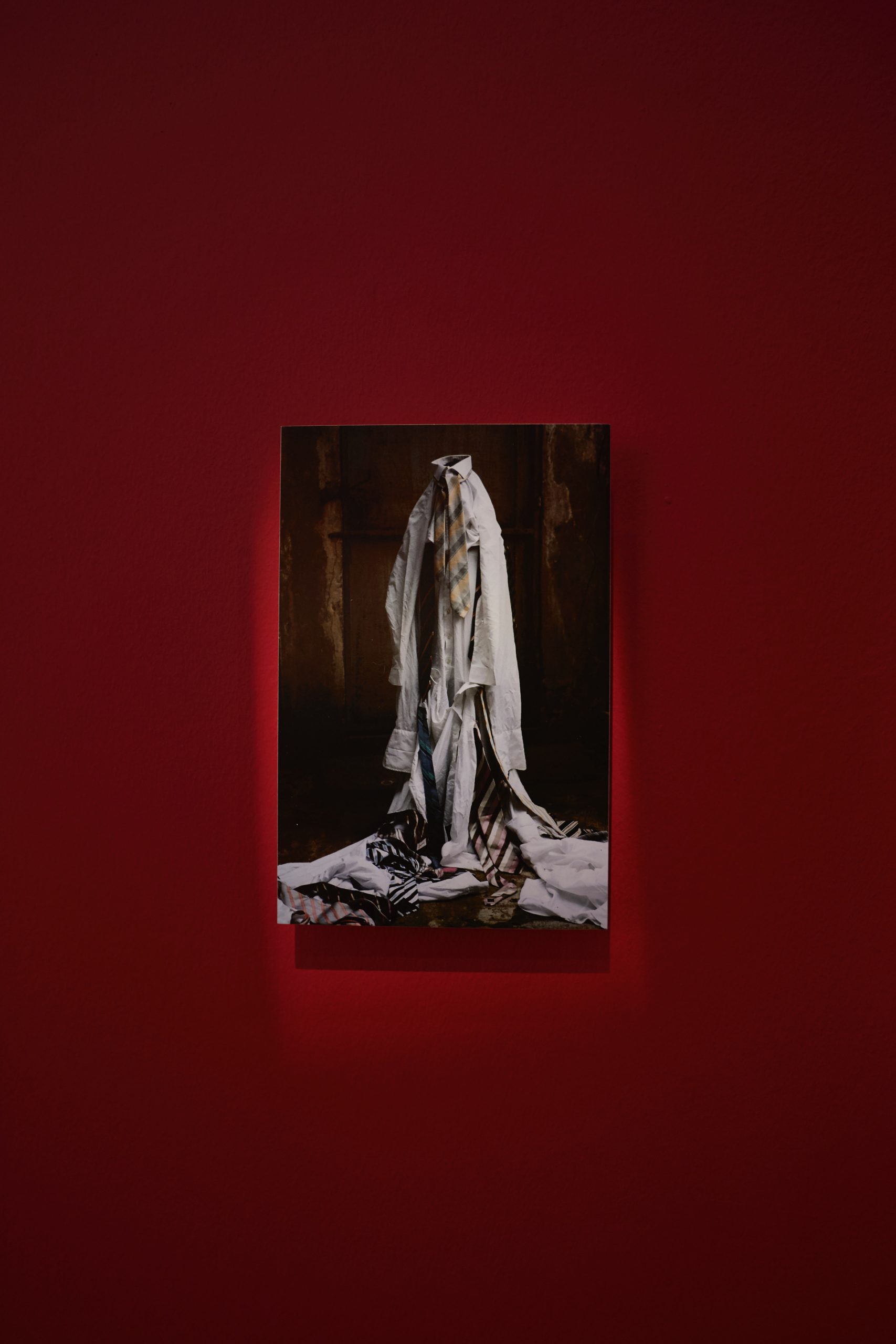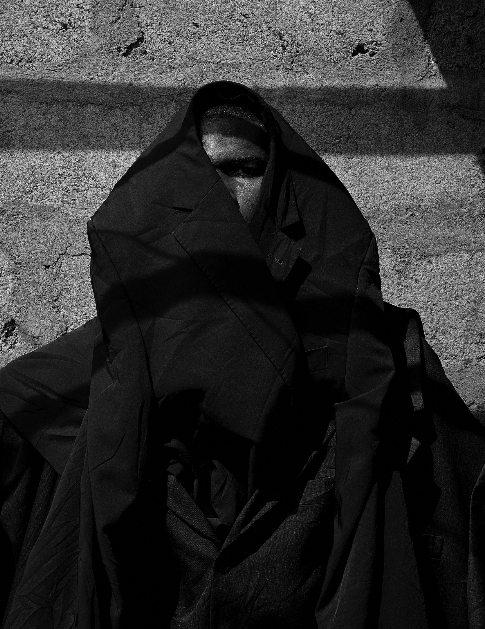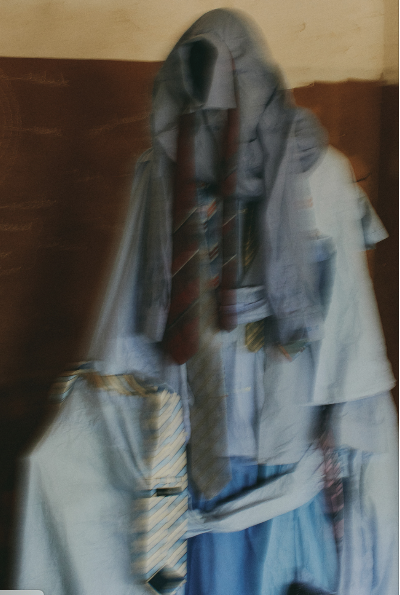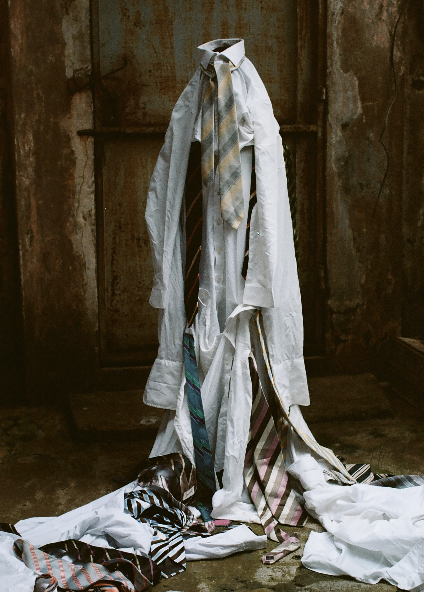As the 17th edition of FNB Art Joburg loomed upon us, the notion of obsession densely lingered in my mind. I’ve been influenced to know obsession as being negatively manic but time and observation has pointed to how it can serve as a powerful and positive force in the realm of artistic expression. When channelled positively, it expands the space within which the artist can impose themselves into the minutiae of the work to achieve extraordinary levels of innovation and mastery. I think of arriving at mastery in this way in relation to Bubu Ogisi, whose work animates a relentless pursuit of material alchemy. Driven by obsession; she has foregrounded varied techniques and technologies, while presenting new ways of occupying time, space and the body.
Bubu Ogisi is a multidisciplinary artist whose work traverses the domains of fashion, performance, and installation. Her practice is rooted in the cultural and spiritual traditions of West Africa, particularly Nigeria, through questioning conventional boundaries she redefines the intersections between art, identity, and the sociopolitical landscape. Ogisi’s work is both a reflection and a response to the complex histories and narratives of the African diaspora, embodying a unique synthesis of indigenous knowledge systems and contemporary aesthetics. Although Ogisi’s creations are deeply rooted in African traditions, they speak a universal language of identity, memory, and transcendence.
Ogisi created a series of images in collaboration with Tamibé Bourdanné which were presented by 16/16, a contemporary Nigerian gallery at the FNB Art Joburg Fair 2024. The exhibition booth was sanctified in red and titled Synthetic Dreams, the works were an alternative interpretation of masquerading culture, integrating layered spiritual elements through the use of repurposed materials. Masquerades hold significant importance in many African cultures, functioning as sacred institutions that protect communities from adversaries and malevolent spirits. They are a manifestation of a broader cultural ethos, deeply woven into the spiritual and social structures of these societies. The series of images paired with sculpture installation, highlighted the intersection of fashion, sculpture, and performance.

Known for her use of salvaged and natural materials, Ogisi draws from West African history, particularly its masquerading traditions, to create layered, textured pieces that reflect deep cultural histories. Through this fusion, Ogisi explores themes of spirituality, transformation and sustainability. The morphological elements of this work stem from an extensive study of African mask traditions. By experimenting with textures and layering fabrics, Ogisi crafts a synthesis of forms that suggests a continuity in stylistic expression.The final images were produced during a research residency in Benin Republic and serve as results of a comparative analysis of individual objects, revealing similarities that contribute to a unified formal language within the body of work.
Ogisi’s practice hosts dialogues between the seen and unseen, a conversation with spirits and energies within the liminal space. Her work is a form of spiritual activism, inviting the viewer to see the unseen, to question the narratives they have been told, and tap into the rhythms of the earth. In thinking about spiritual inheritance, I connect her practice to that of Griots, who are a distinctive class of oral historians, poets, and musicians that play a pivotal role in the cultural and social life of West Africa. Their significance stretches across centuries, as they have been central to preserving the histories, genealogies, and moral traditions of various ethnic groups, particularly among the Mandinka, Wolof, and Fulani. The griot’s role is deeply intertwined with West African conceptions of memory, identity, and continuity, offering a living archive of historical events, genealogical records, and cultural narratives. Within the creation of the figures in the images and sculptures in the booth, we see how the performative aspect of her work is not merely a theatrical gesture; but an embodied practice that seeks to forge a deeper connection between the individual and the collective as well as the material and the immaterial. Her research process centres collaboration while poking at the possibilities of de-bordering the continent through approaching art production as a shared experience thus nullifying the notion of the singular artist.
The works speak to an adherence to deep ecological consciousness and her use of found and ethically sourced materials underlines the importance of developing sustainable art practices. Ogisi critiques the environmental degradation caused by global capitalism but also advocates for a return to more harmonious relationships with the natural world. In this, Ogisi’s work can be situated within a broader discourse on decolonial aesthetics, which seeks to dismantle the Eurocentric biases that have historically shaped the global art world.

























































